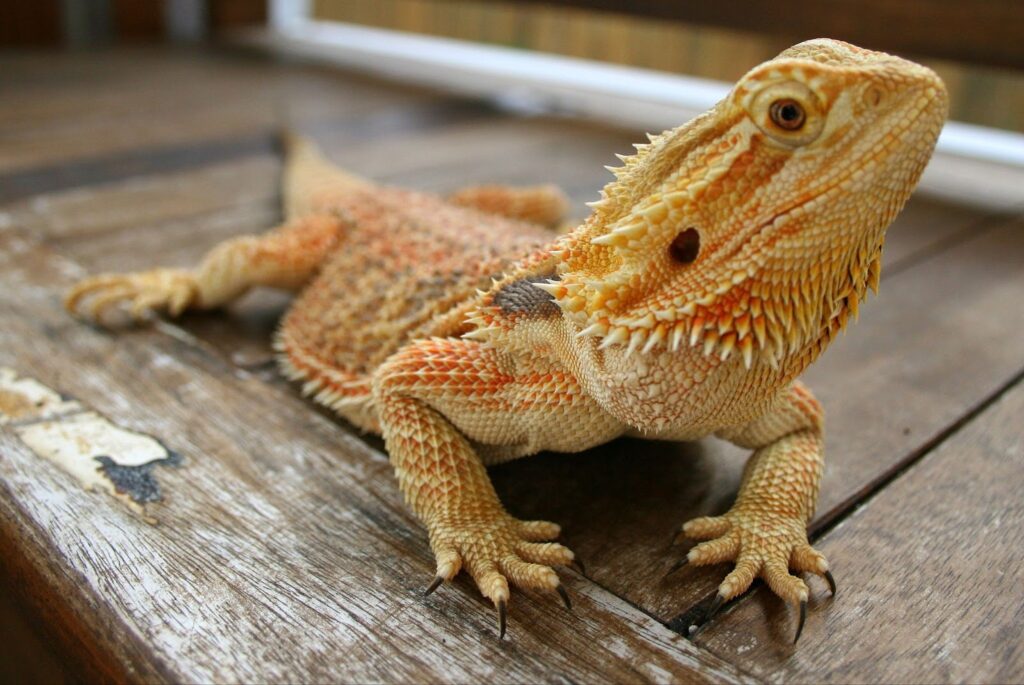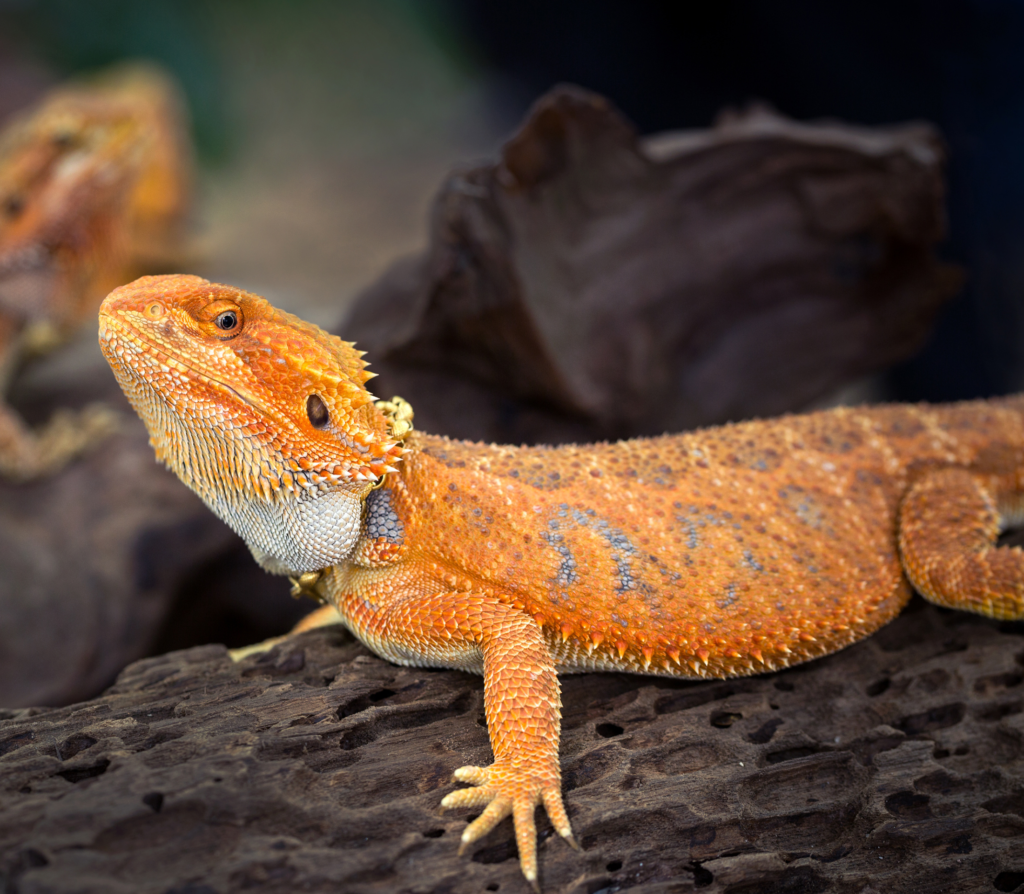Table of Contents
ToggleIntroduction

Bearded dragons, known for their distinctive appearance and charming personalities, have become increasingly popular as exotic pets. These reptiles, native to Australia, have captured the hearts of pet enthusiasts worldwide. Are Bearded Dragons Friendly? Potential owners often ponder whether bearded dragons are friendly. Understanding their behavior and disposition is crucial for fostering a positive and enriching relationship with these remarkable reptiles.
Factors Affecting Friendliness
Age and Socialization
Early Socialisation: Young bearded dragons who regularly handle and socialize with humans have a better chance of developing a good attitude toward humans.
Adolescent Behaviour: Adolescent bearded dragons may undergo phases of increased territorial or defensive behavior, making them less inclined to be as friendly as they were during their earlier stages.
Individual Personality
Variability: Bearded dragons, like people, have unique personalities. Some may naturally be more outgoing and receptive to interaction, while others may be more reserved or skittish.
Observation: Observe your bearded dragon’s behavior to understand their personality traits and preferences.
Handling and Interaction
Gentle Approach: Handle your bearded dragon gently and with care. Avoid sudden movements or loud noises, which can startle them and make them less friendly.
Positive Reinforcement: Use positive reinforcement techniques, such as offering treats or rewards during interactions, to associate human contact with positive experiences.
Encouraging Friendliness
Socialising and Handling Techniques
Gentle Approach: Take a relaxed and patient approach when handling your bearded dragon. Please don’t do anything that would scare them, such as moving quickly or suddenly. Always provide the appropriate amount of support to make them feel safe.
Frequent Interaction: Spend time interacting with your bearded dragon regularly. The more accustomed they become to your presence, the more likely they will become friendly and enjoy human company.
Positive Reinforcement: Use positive reinforcement to reward desired behaviors. Offer treats or favorite foods during and after handling sessions to create positive associations with human contact.
Creating a Comfortable Environment
Optimal Habitat: Ensure your bearded dragon’s enclosure is well-maintained with proper lighting, temperature, and humidity. A comfortable living environment reduces stress and promotes friendliness.
Hide and Basking Spots: Provide hiding spots and basking areas in the enclosure so your bearded dragon can feel secure and regulate its body temperature effectively.
Enrichment: Offer a variety of toys, climbing structures, and objects to stimulate mental and physical activity. Bearded dragons enjoy exploring and interacting with their environment.
Providing Proper Care and Attention
Balanced Diet: Feed your bearded dragon a well-balanced diet that includes a mix of vegetables, insects, and a specialized reptile diet. Proper nutrition contributes to their overall well-being.
Regular Veterinary Check-ups: Schedule regular veterinary check-ups to monitor your bearded dragon’s health. Addressing health concerns promptly ensures their comfort and friendliness.
Consistent Routine: Establish a constant daily feeding, handling, and interaction routine. Bearded dragons thrive on predictability and can become more friendly when they know what to expect.
Can You Pet A Bearded Dragon? Are They Social?

So, you’ve researched and discovered that properly caring for a bearded dragon will result in a more friendly pet. Familiarity is the key. If your dragon doesn’t feel safe, it won’t be cooperative. Ensure your kids know how to properly handle your dragon if they want to play with her. Be sure to treat them gently.
Get the dragon used to people before you introduce it to others. Maintain a serene atmosphere. Gently cradle your dragon and let your companion pet and talk to her. If she is unwilling to speak to you, don’t make her. Return your dragon to her cage if she begins showing signs of stress.
Is The Bearded Dragon Pet-Friendly?
Possessing a bearded dragon while caring for other pets (such as cats and dogs) is entirely feasible. The temperament and species of other pets greatly affect whether or not your dragon will be social.
A bearded dragon may fear a big, active dog but grow friendly with a smaller, calmer dog. The terrarium could even if your dragon isn’t frightened by your cat. Your bearded dragon probably won’t mind if you keep a snake, leopard gecko, or some other exotic pet in a separate enclosure.
Bearded Dragons As Family Pets
Interaction with Children and Other Animals
Child-Friendly: Bearded dragons are considered child-friendly pets due to their docile nature. However, supervision is crucial to ensure gentle handling and prevent accidental injury to the child and the pet.
Compatibility with Other Animals: Bearded dragons can coexist peacefully with other pets like cats and dogs when introduced and monitored carefully. Always prioritize the safety and well-being of all animals involved.
Preparing for Long-term Companionship
Research: Before bringing a bearded dragon into your family, research their care requirements, behavior, and specific needs. Knowledge is key to successful long-term companionship.
Educate Family Members: Ensure that all family members, especially children, are educated about the proper care and handling of a bearded dragon. Everyone should understand their role in the pet’s well-being.
Time and Commitment: Be prepared for the long-term commitment required to care for a bearded dragon throughout its life. It includes providing proper nutrition, healthcare, and a stimulating environment.
Strange Actions Of Bearded Dragons

Bearded dragons will increase their heads and blow out their beards if they come across someone they don’t like. The animal will feel more at ease once it is in the company of humans. Extra caution is required when working with the dragon. It will help the animal become accustomed to you and less fearful.
The beard on your bearded dragon may turn black on occasion. This behavior is indicative of environmental stress in young bearded dragons. After a few weeks have passed, it will be nonexistent. When mature male bearded dragons wish to assert their dominance, they can darken the color of their beards.
It could be because they are territorial and mistake something in the environment or the reflection in the window for an intruder. The bearded dragon’s friendly nature will return once the ‘danger’ is no longer present.
A bearded dragon will often stop feeding and become silent before shedding. Before you freak out, give it a few times to start shedding naturally. It’ll be happy and easygoing again.
Conclusion
The factors influencing their friendliness, from age and socialization to individual personalities and proper care, are paramount in fostering a positive and enriching relationship. Bearded dragons can be friendly and affectionate with their human companions and serve as educational pets, introducing families to the wonders of the natural world. While challenges and commitments exist, the rewards of sharing your life with a bearded dragon can be immeasurable.







